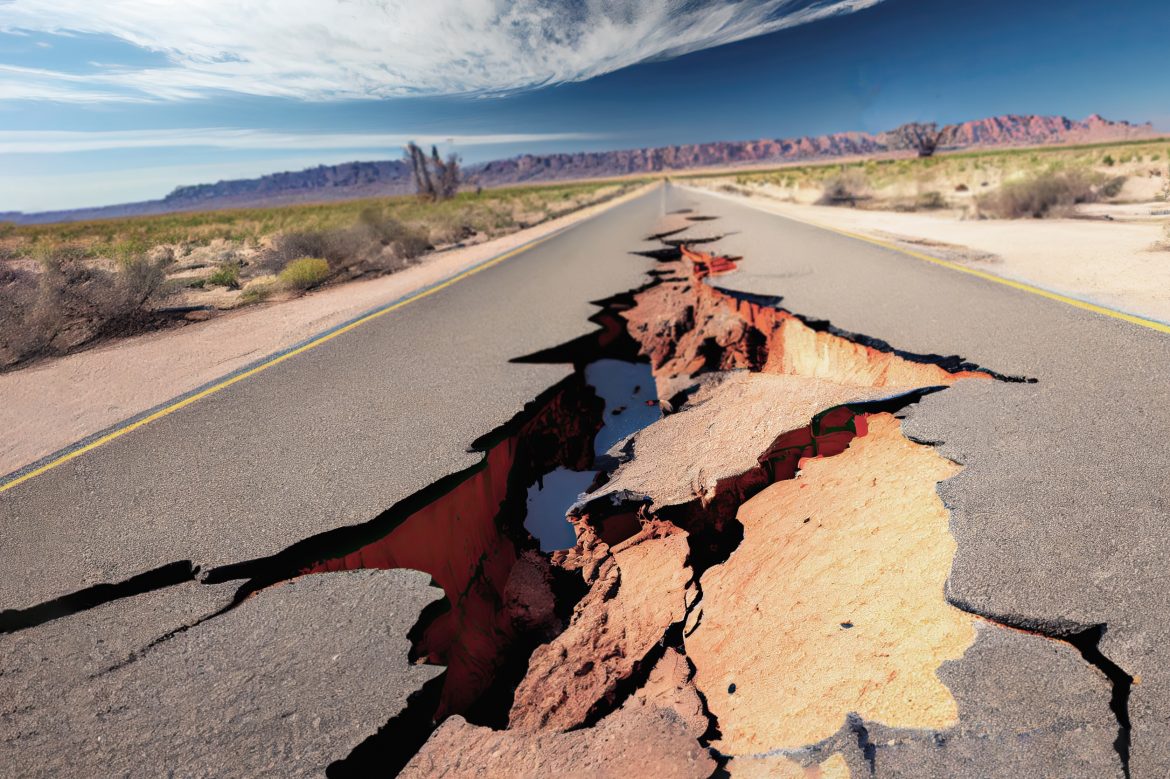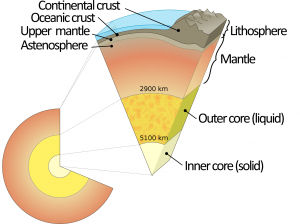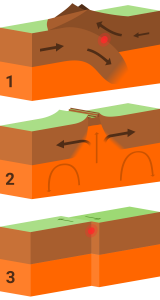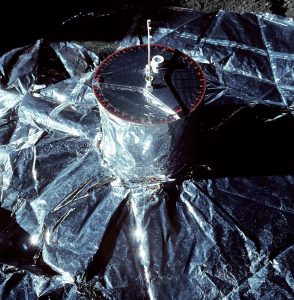
What Causes Earthquakes?
Earthquake is a natural disaster that has caused great destruction to humanity throughout history, with a “shaking” effect in every sense. However, it is a natural reality of our planet. There is no place on Earth that does not experience earthquakes. While some regions experience fewer earthquakes and little ones, some regions are prone to a higher number of earthquakes and more powerful ones. In ancient times, many different opinions were put forward regarding the causes of earthquakes. They have been associated with water, the Sun, and even the irregularities between cosmic energies of yin and yang. Now we know that the real cause of earthquakes lies within the structure and formation of the Earth.
The outer “solid” layer of the Earth is known as the lithosphere. It includes both the planet’s rocky crust and some portion of the upper mantle layer beneath it. The hard crust is the thinnest layer of our planet, making up less than one percent of its entire volume. That “some portion” of the upper mantle below the crust is known for having displayed its elastic behaviour for thousands of years. At the point where the lithosphere ends, another layer of the upper mantle begins. The asthenosphere, which is hotter, more viscous, and thus weaker. The mantle layer then continues deeper for miles, getting hotter with depth, reaching the extraordinarily hot outer core and then the very dense and solid inner core in it. Our main focus in this article will be the lithosphere and the asthenosphere below it.

The Earth’s lithosphere is studied in two parts. Continental lithosphere lies beneath geological continents and continental shelves, which are the areas of shallow seabed close to the shores of continents. The oceanic lithosphere covers the ocean basins. The continental lithosphere is thicker, but the oceanic lithosphere has a higher density.
The lithosphere does not exist in one piece. It is broken into seven (or eight, according to some sources) major tectonic plates, which have been moving above the fluid-like asthenosphere for about 3.4 billion years. When the boundaries of tectonic plates are close to each other, an interaction occurs between them. This interaction can be in three different forms:
1) Convergent: One plate slides beneath the other. The lithosphere is lost as a result of subduction. Earthquakes are common along such boundaries.
2) Divergent: As plates move away from each other, magmatic material rising from the asthenosphere erupts and fills the space in between, resulting in addition to the lithosphere.
3) Transform: Plate boundaries move horizontally against each other in opposite directions, creating faults, but with no addition or loss of lithosphere.

Why do tectonic plates move?
This question has long been a subject of serious research and debate among scientists. According to many experts, the viscosity and the relative weakness of the asthenosphere is the main cause behind these movements, naturally triggering the subduction of the high-density oceanic lithosphere above it. Another driving force is the cyclical movements of “convection currents” within the extremely thick mantle, arising from temperature differences. However, scientists are discussing several other potential factors including the friction between the lithosphere and asthenosphere, the Earth’s rotation, and the Moon’s gravitational force exerting a tidal drag on the Earth’s crust. Whatever the cause, these movements lead to the formation of mountains, oceanic trenches, and mid-ocean ridges. Earthquakes are also among several events caused by the movement of tectonic plates.
An earthquake occurs when a sudden release of energy in the lithosphere creates seismic waves, leading to shaking on the surface of the Earth. Most earthquakes are caused as a result of the energy released by the rupture of geological faults or the sudden movement of active faults. The point of initial rupture is called the hypocentre, while the ground-based point directly above it is called the epicentre.

What is a seismic wave?
Seismic waves are acoustic energy waves that travel through the planet. Earthquakes create several distinct seismic waves that travel at different velocities. As a rule, the velocity of these waves increases with depth (until the outer core).
Primary waves (P waves): They are the fastest moving seismic waves, which are recorded the first. As they can travel through solid rocks as well as liquids and gases, they can pass through the Earth’s core. They are pressure (or compression) waves and move the ground back and forth in the direction of wave motion. They are responsible for the first hit or jolt felt during an earthquake.
Secondary waves (S waves): Their speed is usually 60 percent of the P waves. They are transverse waves and move the ground up and down, perpendicular to the direction of wave motion.
Surface waves: Once P and S waves reach the surface, they continue their motion differently. Surface waves are the slowest and most destructive seismic waves. They only move along the Earth’s surface and may cause violent shaking of the ground. There are two types of surface waves. Love waves move the ground transversely, causing cracks in the surface. Rayleigh waves are slower and travel along the surface in a rolling motion. Most shaking felt during an earthquake is caused by these surface waves, which may cause significant damage to buildings and infrastructure.
Seismographs are devices that measure the speed and power of seismic waves, giving an idea about the magnitude of an earthquake. The mechanical seismographs used in the past consisted of a spring or pendulum and were able to record the seismic waves generated during an earthquake on paper. A fixed pendulum hung inside was able to record seismic waves on the apparatus that moved during an earthquake. Today, we use seismometers equipped with electromagnetic sensors that convert seismic waves into electrical signals. Seismologists study these data to get information about an earthquake’s magnitude and epicentre.
The epicentre of an earthquake is determined by looking at the difference between the arrival times of its P and S waves to seismometers. As these two types of waves have different velocities, a seismometer detects S waves from an earthquake a while after its P waves. This difference gives us how far that particular seismometer is from the earthquake’s epicentre, but it cannot indicate its exact direction. To figure out the actual epicentre, we can do a triangulation. By using the distance of at least three seismometers to the epicentre, we draw three circles and their intersection point gives us the epicentre.

What do the magnitude and intensity of the earthquake correspond to?
The magnitude of an earthquake is a measure of the energy released during that earthquake. Although not used much anymore, the Richter scale, which we are all familiar with, is a unit of measurement discovered in 1935 by Charles F. Richter of the California Institute of Technology. It is defined as the logarithm of the amplitude of seismic waves recorded by seismographs and is a value clarified after making necessary corrections by looking at the distance of different seismographs from the earthquake epicentre. In the magnitude measurement, each consecutive value corresponds to a 10-fold increase in the amplitude of the earthquake waves. The energy released increases in multiples of 32. However, the calculations are complex and the declared magnitude of an earthquake may change after additional calculations.
The intensity of an earthquake is the measure of its effects on people, structures, and nature at the point where it is felt. It is different from the magnitude but naturally depends on it. Other variables such as the depth of the hypocentre and its distance from the region also affect the intensity of an earthquake. In summary, it is a reflection of the damage caused by an earthquake and is determined according to some internationally accepted charts.
Can earthquakes have different causes?
Tectonic earthquakes, the most common type, are caused by a sudden release of energy in the Earth’s crust due to plate movements. These are the most powerful and the most damaging earthquakes. They may last for minutes, which adds to their damaging effects. However, earthquakes can also have other causes.
The movement of magma beneath volcanoes can cause seismic activity as it exerts pressure on the surrounding rocks. Volcanic earthquakes are usually shallow, not too strong, and they are short. However, multiple earthquakes can be a harbinger of an impending eruption.
When large reservoirs fill with water, the added weight of the water may trigger seismic activity in the surrounding areas. The movement of large glaciers can also cause seismic activity due to their enormous weight. Both of these are rare, small earthquakes confined to the area of the event.
Earthquakes may also occur as a result of the sudden collapse of underground mines or caves. These earthquakes usually last only a few seconds and are localized to the collapse area. Sometimes earthquakes can occur due to powerful explosions in underground mines or boreholes. The explosion emits a powerful shock wave, which causes instability in the surrounding rocks and generates seismic waves. These are usually felt very close to the explosion area and the intensity of tremors is very low. Nuclear tests and other large explosions can also cause such earthquakes.
Do earthquakes occur in other celestial bodies?
The Earth is not the only place in our Solar System experiencing seismic activity. Seismometers deployed on the Moon, and more recently on Mars, allow researchers to gain insight into the interior structure of other celestial bodies.
The first seismometer on the lunar surface was placed by Neil Armstrong and Buzz Aldrin, who went to the Moon with the Apollo 11 mission. These were the first instruments used to measure seismic activity on another celestial body. Additional seismometers were also installed on subsequent Apollo missions and they worked for many years. Moonquakes may be caused by meteorites striking the lunar surface, or by the Earth’s gravitational force compressing and pulling the Moon (similar to the Moon’s tidal drag on the Earth). As the Moon’s interior cools, it dries up and shrinks like a raisin, causing quakes by bending and breaking the crust. The heat from the sun can also produce this type of thermal quake on the lunar crust.

Quakes on Mars are not caused by tidal interactions, but by deep tensions occurring as a result of the planet’s cooling and contraction. Like the Moon, meteorite impacts are thought to produce seismic waves on the planet. Martian quakes were not proven until researchers landed a seismometer on the red planet in 2018 as part of NASA’s InSight mission. In this mission, the first definitive Martian quake was detected on April 6, 2019, with the help of a surface-mounted SEIS (Seismic Experiment for Interior Structure) instrument. Almost 500 more events have been detected since then. In May 2022, SEIS detected a magnitude 4.7 quake and continued to detect waves for about 10 hours after it. This was the largest Martian quake ever seen until that time.
Seismic activity has also been detected on other planets in our solar system. For example, Venus, which has a very thick crust, periodically experiences volcanic resurfacing events. While Venus probably has significant volcanic and seismic activity, we don’t have clear information about it as very few spacecraft have been able to probe its surface in detail.
Many objects in the Solar System are likely experiencing some level of quakes, tremors, or vibrations. Even the Sun itself experiences seismic events known as solar quakes. After some solar flares, surface waves were observed as seismic transitions, sometimes for an hour. Recent observations have provided evidence that the source of these waves is about 1 million kilometres below the photosphere. Scientists still have not been able to fully explain the mechanism of solar quakes.
However, the Earth is the only place where tectonic quakes occur, because –as far as we know- no other planet has moving plate tectonics. Even though some evidence suggests that Jupiter’s moon Europa has a similar structure, the Earth is the only known planet with plate tectonics, in which the crust has split into separate pieces floating above the mantle.
Like Earth, Venus and Mars are believed to have hot interiors. This means that they continue to lose heat. Although their surfaces show evidence of ancient tectonic deformation, neither has Earth-like plate activity today.
REFERENCES
- 1. https://www.britannica.com/science/plate-tectonics/Earths-layers
- 2. https://www.britannica.com/science/earthquake-geology/Volcanism
- 3. https://www.bgs.ac.uk/discovering-geology/earth-hazards/earthquakes
- 4. https://www.space.com/earthquakes-facts-science
- 5. https://ec.europa.eu/research-and-innovation/en/horizon-magazine/moonquakes-and-marsquakes-how-we-peer-inside-other-worlds
- 6. https://www.space.com/mars-insight-most-powerful-marsquake
